The role of DNA methylation in morphological deformities in artificially reared cisco (Coregonus artedi)
Contributing Authors
Andrew E. Honsey (USGS, ahonsey@usgs.gov), Clare Venney (University of Alberta), Trevor Krabbenhoft (University at Buffalo), Jason Smith (Bay Mills Indian Community), Erin Dunlop (OMNRF), Roger Gordon (FWS)
Project Description
We propose a pilot project to investigate the effects of artificial rearing on cisco DNA methylation. This project will build on an ongoing project funded in FY24 led by A. Honsey (“Effects of incubation temperature on survival, growth, morphology, and gene expression of artificially reared cisco (Coregonus artedi): implications for best practices for captive propagation and restoration”), which investigates the effects of egg incubation temperatures on transcription, morphology, and fitness-related traits in cisco. Specifically, we will explore (1) whether rearing cisco at different temperatures affects DNA methylation, (2) whether these methylation changes are associated with altered phenotypes and transcriptional states associated with artificial rearing (e.g., growth, fitness-related traits, gill raker morphology, pugheadedness), and (3) whether altered rearing conditions can help mitigate the effects of captive rearing by minimizing epigenetic changes. The incorporation of DNA methylation analyses to these ongoing experiments will add an additional layer of molecular data to understand the potential heritability and long-term stability of the phenotypic effects of artificial rearing in cisco. If artificial rearing affects DNA methylation, the morphological (including deformities) and fitness effects may be persistent after release into natural systems, both within and among generations. This would be of particular interest for managers focusing on coregonine restoration. If the unintended effects of artificial rearing are short-lived and disappear quickly in nature, then it may not be worthwhile to attempt to produce more wild-looking fish. However, if the effects of artificial rearing persist for generations in the wild (e.g., through heritable DNA methylation changes), further attempts to reduce the phenotypic consequences of artificial rearing may be warranted. As described in the FY24 proposal, early life temperatures have been shown to impact coregonine growth, development, and survival, and egg incubation temperature is a key environmental variable that could potentially be adjusted in production facilities to maximize the efficiency and efficacy of stocking efforts. Results from this work will help to inform hatchery rearing protocols and serve as the groundwork for future research on epigenetic biomarkers to nonlethally identify captive-bred cisco in the Great Lakes.
